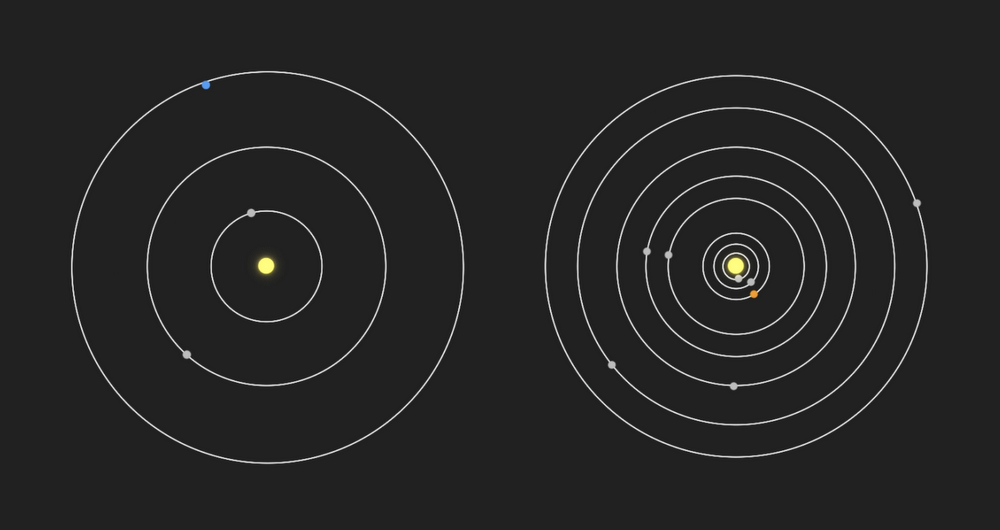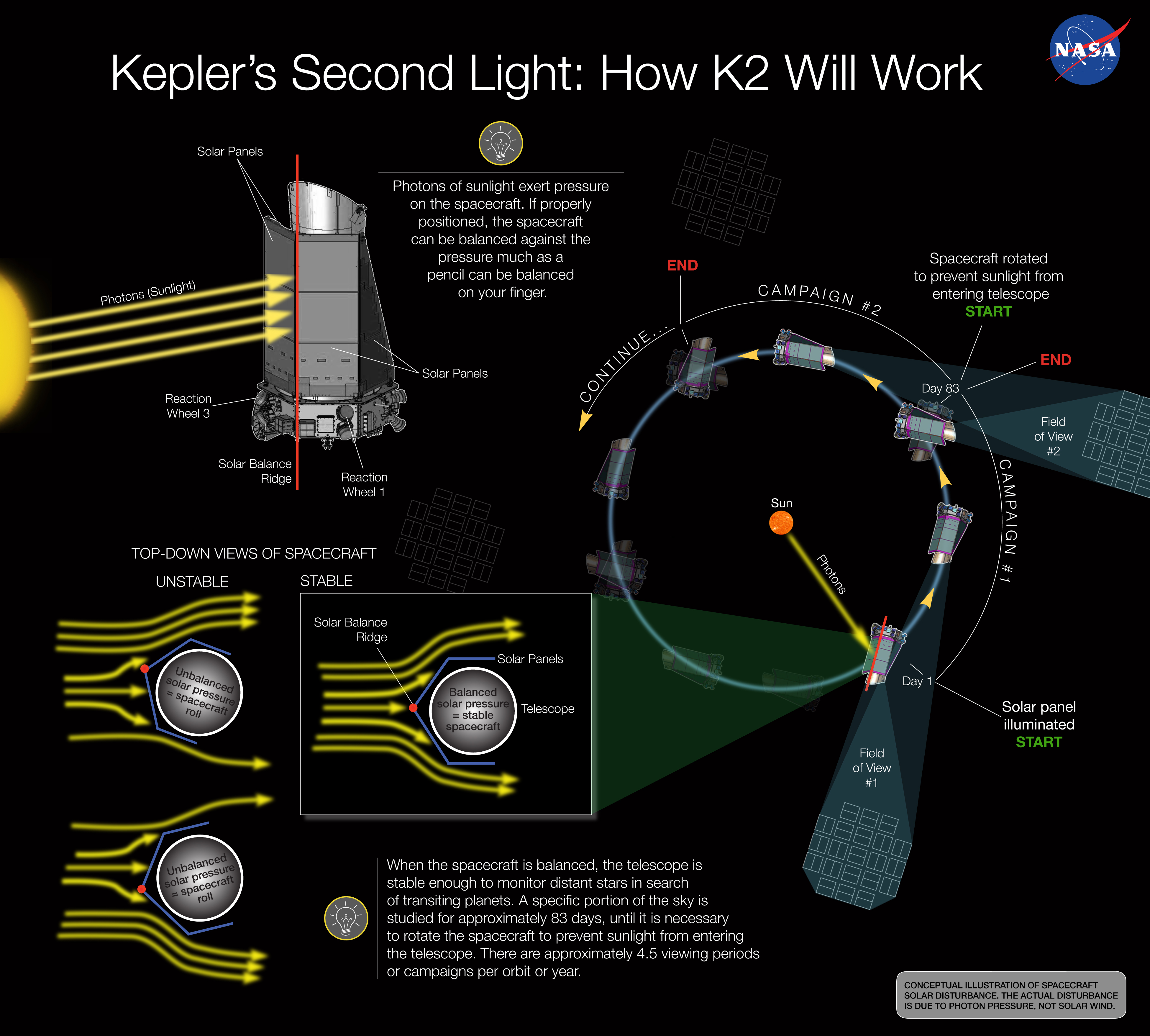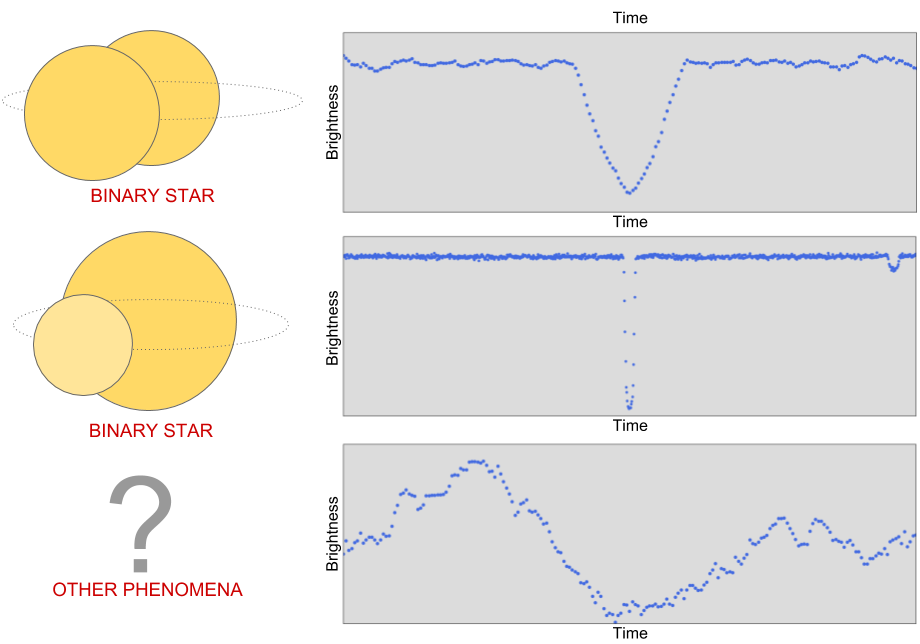Google has opened the code for the search engine exoplanets according to data from "Kepler"

Fragment of the Solar system (left) in comparison with the eight-planet Kepler 90 system (right). The exoplanet Kepler 90i detected by Google’s neural network with a 14-day orbital period is marked in orange
Researchers are finding new applications of neural networks for image processing. Theoretically, the possibilities of machine learning with reinforcement (DL) are truly limitless, but when you look at the real achievements of these programs, there are not so many really useful ones in practice. Most often, neural networks achieve success in any game, giving out a quantitative result in glasses as a positive stimulus. But what is the point that your AI learned how to play Counter-Strike perfectly if it is not able to put its knowledge into practice and neutralize real terrorists?
But in some cases, DL is still used not only to study the DL itself, but also to solve practical problems important to humanity. For example, they are used in healthcare , quantum chemistry and nuclear physics (links to Google research are given everywhere). Now astrophysics has joined this list. Engineers from the Google Brain division found two new exoplanets , having trained the neural network to analyze data from the Kepler space telescope . Although these are only preliminary results after processing 670 star systems, they prove the applicability of machine learning in this field.
')
On March 8, 2018, the developers of Google posted on GitHub the source code of a program for processing data from Kepler, neural network training programs and issuing forecasts for the most promising stellar systems.
Google hopes that publishing the source will help other researchers to develop similar neural networks and learning algorithms for processing data from other space missions, including K2 (Kepler’s second mission) and Transiting Exoplanet Survey Satellite .
As is known, on May 12, 2013, the Kepler telescope failed; the orbital observatory lost its orientation in space, the on-board computer went into "safe mode". But NASA engineers did not give up and proposed an innovative way to stabilize the space station using the solar wind. Schematically invented technology is shown in the illustration.

Since the beginning of the K2 mission, more than 20 exoplanets and more than 300 candidates have been discovered - and Kepler continues to supply new data for analysis.
The main scientific instrument of the space observatory is a photometer , made up of 42 CCD sensors 50 × 25 mm in size and a resolution of 2200 × 1024 pixels each. Every three seconds there is a reading from the CCD. A photometer continuously records the brightness of a star, and if a planet passes in front of it, it captures a characteristic signal in the form of U.

The problem is that other astronomical objects, and not just planets, can give a similar signal. For example, it can be double stars, star spots , cosmic rays, noise from tools and other phenomena.

NASA's automatic processing pipeline tries to filter out signals that may correspond to exoplanets. But even after such filtering, there are too many candidates, and all require verification. At the moment, the conveyor has issued more than 30,000 candidates, and about 2,500 in reality turned out to be planets.
Google engineers have trained the neural network on the existing data set - the very 30,000 candidates who have actually been tested by people (teacher training). So she learned to confidently distinguish planets from false positive candidates. After that, it was launched to test on a small sample of 670 star systems - and it was possible to find two previously unknown exoplanets Kepler-90i and Kepler-80g , which had previously escaped the attention of astronomers when manually checking candidates.

Now, after publishing the source code, anyone can start searching for new exoplanets on their own computer, having trained the neural network from Google according to the published instructions and downloaded data from Kepler into it.
Processing is waiting for another 200,000 star systems. Earth-like planets can rotate around each of them.
Source: https://habr.com/ru/post/371337/
All Articles